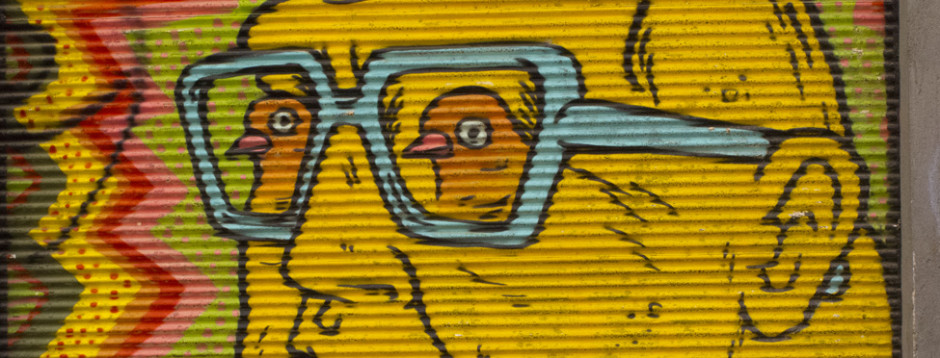Published in Art Spiel Nov. 29, 2023
Who was Stephane Mandelbaum? A closeted gay man? The child of Holocaust survivors? A liar? A thief? A brilliant artist you’ve never heard of? All of the above and perhaps more.
The Drawing Center is presenting the first-ever show of Mandelbaum’s work in the US, and it is a show that left me gob-smacked. The combination of Mandelbaum’s brilliant drawing, deeply personal vision, and the complexity of his backstory is a tale made for cinema. Born in 1961 to a family of paternal Polish Holocaust survivors and maternal Belgian Armenians, Mandelbaum grew up in the town of Namur, about an hour and a half from Brussels. His Father, Ari, was a well-known painter, and his mother, Pili, was an illustrator. There is no record of siblings. A gifted draftsman from a young age but dyslexic and eccentric, Mandelbaum moved from Namur to Brussels, where he seemed to devote his time to making drawings and engaging in what is termed “petty crime.” He married a woman from Zaire (now called The Democratic Republic of Congo) and lived between the worlds of Belgian Africans, the Belgian crime underworld, and his own artistic imagination.


Much about Mandelbaum is obscured by the fact that he was by several accounts a habitual liar, and this leaves massive gaps and red herrings in his autobiography. What can be verified is thin; what is known creates a puzzle perhaps best gleaned from the work itself.
But I buried the lede: Mandelbaum was murdered, and his corpse disfigured after he delivered a stolen Modigliani painting that turned out to be a forgery to underworld figures who had hired him to steal it. He died in 1986 at the age of 25. What survives is a huge archive of drawings and notebooks, 57 of which are being shown at The Drawing Center. I find it curious that the wall text and press release make little to no note of Mandelbaum’s crime dealings and the cause of his death. Rather than being sensationalist, they are to me, essential elements in creating a full portrait of this elusive artist.
Primarily a portraitist, Mandelbaum’s drawings in this exhibition range in size from a diminutive 5 x 7 to a life-size 68 x 52. While there are a few portraits of women drawn from a bar in the northern part of the city, most of the drawings in the exhibition are of men. There are some family members, most notably a huge portrait of the artist’s father, Ari Mandelbaum (pictured above), which deserves more discussion. But mostly, the portraits are of famous gay men- Piero Passolini, Francis Bacon, Werner Maria Fassbinder, George Dyer, Arturo Rimbaud and (rumored to be gay) Nazis. Mandelbaum had a fascination with and was drawn to transgressive artists, political and military strongmen, denizens of the night, crime figures, his own Jewish heritage, and, yes, Nazis. A psychologically complex combination of interests, to be sure.
Because of his opaque biography, we don’t really know what the connection was in his mind, as well as the nature of his marriage or lifestyle. It is strange to me that there seems to be so little recorded about Mandelbaum. He died in 1986, and there must be people still alive who knew him. But after exhaustive online research, I found nothing more than sketchy outlines. The inclusion in his drawings of Yiddish, German, and French text, as well as collaged porn photos and Nazi iconography, makes it tantalizing to armchair psychoanalyze the work. Rather than opine in the dark about his artistic motivations and life, I leave the work to speak for itself, as apparently did the artist and those who survived him.



Most, if not all of Mandelbaum’s portraits appear to be painted from photographs, albeit with some subtle tweaks. Mandelbaum often added in aspects of his own visage to his “sitter’s” image or added cartoons of himself sneaking into larger compositions. Appearing and re-appearing over and over again is a chilling portrait of Joseph Goebbels, Hiltler’s chief propagandist and a virulent anti-Semite. Mandelbaum portrays Goebbels in profile, his mouth open in mid-yell, the image taken from an infamous speech of May 1933. His teeth have been removed from the portrait, an interesting artistic choice that opens the door to all sorts of theories of the artist’s intent.


Drawing with the simplest of implements- ballpoint pen and pencil, a little gouache, and a smattering of collage, Mandelbaum shows an intuitive and fluid style. His compositions are sophisticated, often using large areas of negative space balanced by jam-packed spaces to move his narratives forward. He regularly alternates deeply dense areas of marks with those that are sketchier, focusing our attention on the faces and moods of his sitters.
This long overdue exhibition is by turns terrifying, sad, provocative, and brilliant. Mandelbaum, possibly a tragic but undeniably complex character, has left us with a body of work that raises more questions than answers. To me, that is always a sign of great artwork.
Stephane Mandelbaum- The Drawing Center, 35 Wooster St. Through February 18, 2023
About the Writer: Melissa Stern lives in NYC and The Hudson Valley. Her mixed material sculpture and drawings are in corporate and museum collections throughout the US. Her multi-media project The Talking Cure has been touring the United States since 2012, showing at The Akron Museum of Art, Redux Contemporary Art Center (Charleston), The Weisman Museum, Real Art Ways (Hartford) and The Kranzberg Art Center (St. Louis), and at The Fuller Craft Museum in Brockton.MA. She has written about art and culture for The New York Press and CityArts for eight years and is a contributing writer to Hyperallergic and artcritical. Melissa has joined Art Spiel as a contributing writer.


























































